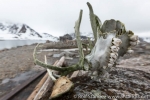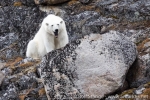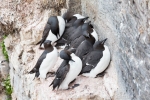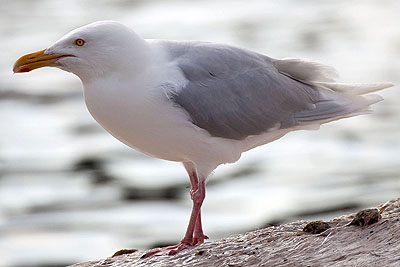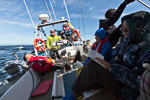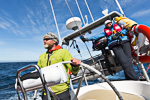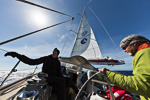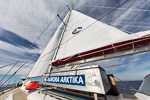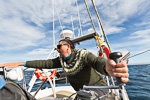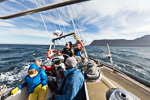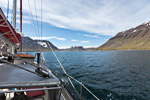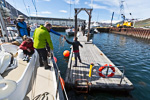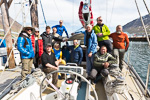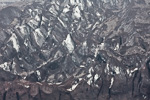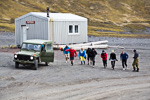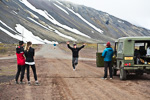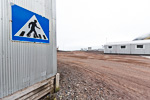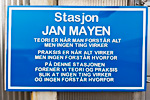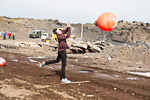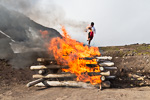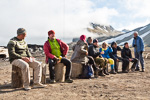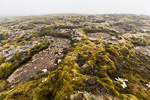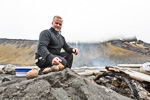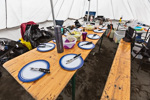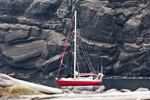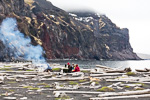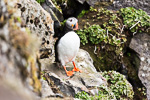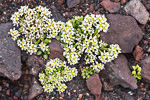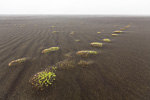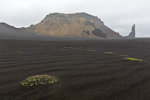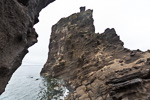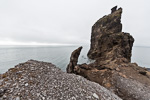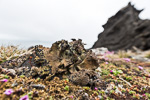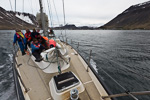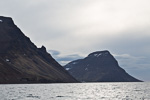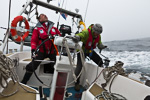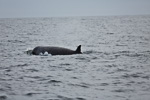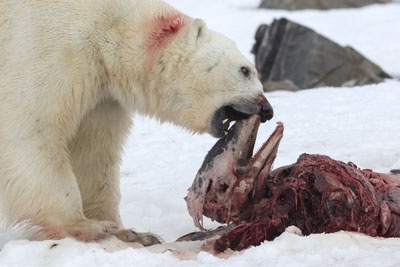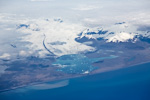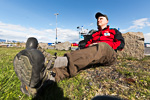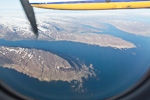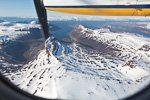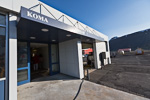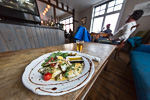-
current
recommendations- Liefdefjord
New page dedicated to one of Spitsbergen's most beautiful fjords. Background information and many photos.
- New Spitsbergen guidebook
The new edition of my Spitsbergen guidebook is out and available now!
- Liefdefjord
New page dedicated to one of Spitsbergen's most beautiful fjords. Background information and many photos.
Page Structure
-
Spitsbergen-News
- Select Month
- May 2025
- April 2025
- March 2025
- February 2025
- January 2025
- December 2024
- November 2024
- October 2024
- September 2024
- August 2024
- July 2024
- June 2024
- May 2024
- April 2024
- March 2024
- February 2024
- January 2024
- December 2023
- November 2023
- October 2023
- September 2023
- August 2023
- July 2023
- June 2023
- May 2023
- April 2023
- March 2023
- February 2023
- January 2023
- December 2022
- November 2022
- October 2022
- September 2022
- August 2022
- July 2022
- June 2022
- May 2022
- April 2022
- March 2022
- February 2022
- January 2022
- December 2021
- November 2021
- October 2021
- September 2021
- August 2021
- July 2021
- June 2021
- May 2021
- April 2021
- March 2021
- February 2021
- January 2021
- December 2020
- November 2020
- October 2020
- September 2020
- August 2020
- July 2020
- June 2020
- May 2020
- April 2020
- March 2020
- February 2020
- January 2020
- December 2019
- November 2019
- October 2019
- September 2019
- August 2019
- July 2019
- June 2019
- May 2019
- April 2019
- March 2019
- February 2019
- January 2019
- December 2018
- November 2018
- October 2018
- September 2018
- August 2018
- July 2018
- June 2018
- May 2018
- April 2018
- March 2018
- February 2018
- January 2018
- December 2017
- November 2017
- October 2017
- September 2017
- August 2017
- July 2017
- June 2017
- May 2017
- April 2017
- March 2017
- February 2017
- January 2017
- December 2016
- November 2016
- October 2016
- September 2016
- August 2016
- July 2016
- June 2016
- May 2016
- April 2016
- March 2016
- February 2016
- January 2016
- December 2015
- November 2015
- October 2015
- September 2015
- August 2015
- July 2015
- June 2015
- May 2015
- April 2015
- March 2015
- February 2015
- January 2015
- December 2014
- November 2014
- October 2014
- September 2014
- August 2014
- July 2014
- June 2014
- May 2014
- April 2014
- March 2014
- February 2014
- January 2014
- December 2013
- November 2013
- October 2013
- September 2013
- August 2013
- July 2013
- June 2013
- May 2013
- April 2013
- March 2013
- February 2013
- January 2013
- December 2012
- November 2012
- October 2012
- September 2012
- August 2012
- July 2012
- June 2012
- May 2012
- April 2012
- March 2012
- February 2012
- January 2012
- December 2011
- November 2011
- October 2011
- September 2011
- August 2011
- May 2011
- April 2011
- March 2011
- February 2011
- January 2011
- December 2010
- November 2010
- September 2010
- August 2010
- July 2010
- June 2010
- May 2010
- April 2010
- March 2010
- February 2010
- November 2009
- October 2009
- August 2009
- July 2009
- June 2009
- May 2009
- April 2009
- March 2009
- February 2009
- January 2009
- December 2008
- November 2008
- October 2008
- August 2008
- July 2008
- June 2008
- May 2008
- April 2008
- March 2008
- February 2008
- April 2000
- Select Month
-
weather information
-
Newsletter

| Guidebook: Spitsbergen-Svalbard |
Home →
Yearly Archives: 2015 − News & Stories
Woodfjord – 5th July 2015
Sun
5 Jul
2015
The lagoon in Mushamna is a piece of art by nature. A beautifully curved, narrow gravel bar is separating the lagoon from the fjord. The entrance is 10 metres deep and hardly much wider. Ideal to spend a sheltered night at anchor.
And to land in almost all kinds of weather. Today it is completely calm, not a problem anyway. Still a lot of snow, but the land is inviting to walk around and explore.
But the landing came to an end after already a few minutes. The place was already occupied. This polar bear, which appeared out of nowhere just a few hundred metres from us, it clearly had the right of way.
What followed was quite incredible. We spent most of the day on board Antigua inside the lagoon, moving just a few hundred metres here and there. The polar bear – a lady, equipped with a satellite sender from the Norwegian Polar Institute – walked around and then laid down on the ice. A second bear came along and went over the ice to the fjord one, scaring it to death so it ran away so the water was splashing on the rotten ice.
Woodfjord – 5th July 2015 – Photo Mushamna
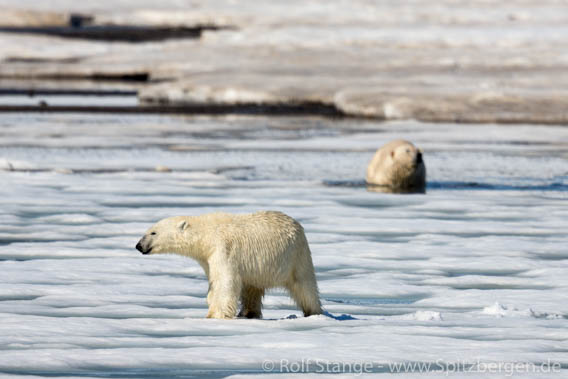
Later, a third bear came around the mountain in the south, an impressive male. He walked past bear number 2 on the ice of the lagoon, but they did not pay much attention to each other. Meanwhile, bear no 1 had disappeared to the south. Bears 2 and 3 walked here and there over the ice and along the shore, much to our great pleasure on board. So the sunny hours went quickly, one after the other.
Velkomstpynten – 4th July 2016
Sat
4 Jul
2015
How often do you have the chance to go ashore on the north coast of Spitsbergen? Not in a well sheltered bay or fjord, but on a shore which is neighbouring the North Pole? Not too often. And when you have the opportunity, you have to use it.
The whalers did so already, looking out for whales and ice from these hills. Broken pieces of clay pipes near an old, large cairn may well date back into the 17th century. The land is still largely snow-covered. Big snowfields, wet, heavy snow. Best to make some detours to walk around them. So the kilometres are adding up quickly.
Photo Velkomstpynten – 4th July 2016
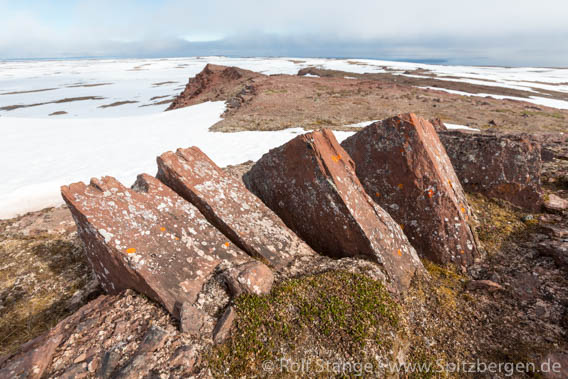
The coastal rocks separating small bays, the hills, the whole country – everything is red. Desert sand, more than 350 million years old. Eroded debris of a mountain range washed into the sea ages ago.
Raudfjord – 03rd Juli 2015
Fri
3 Jul
2015
Raudfjord: Fog lecture polar bear bird cliff polar fox trapper hut snow reindeer graves sun beach silence chocolate polar bear ice fog
Raudfjord – 03rd Juli 2015 – Photo Alicehamna
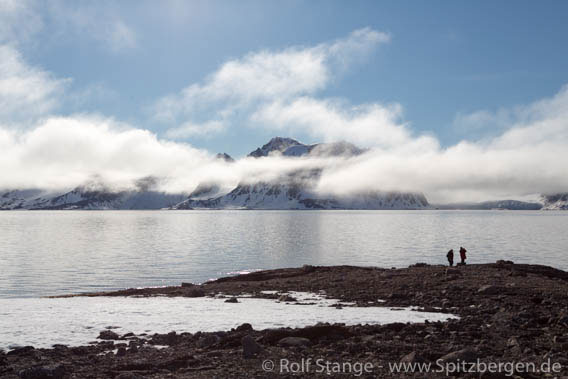
The Northwest: polar bear country – 2nd July 2015
Thu
2 Jul
2015
As yesterday, I am sitting to write my little blog late in the evening. These days are so full, the landscape in northwestern Spitsbergen is so densely packed with so many things. So many islands where one could go to have a look to see what is there. And you are glued to your binoculars here. Behind every point, on every slope there might be a polar bear. And on one slope, there was a polar bear, sleeping on a snow field. On many beaches, there could be walrusses. And on a little skerry, there were two walrusses. Which is quite unusually. Normally, they are lying on beaches or ice floes, not on rocks. Someone said these ones were probably raised by Harbour seals. They like to lie on rocks.
It was a bit of whalers’ weather in these old whaling waters. Grey, a bit windy, the occasional bit of snow and rain in the air. In the late afternoon, the sun came almost out, casting light on the little peninsula where Waldemar and Sally lift a long, long time ago in their lonely hut, which they had once built on a whaler’s grave.
The Northwest: polar bear country – 2nd July 2015
- gallery anchor link: #gallery_722
Click on thumbnail to open an enlarged version of the specific photo.
We saw two more polar bears during the later evening, both making their way on steep, rocky slopes. The first one, equipped with a collar with satellite tracker from the Norwegian Polar Institute and thus obviously a lady bear, was busy making herself unpopular amongst the owners of various birds’ nests on an island. The second one was stalking a reindeer for almost a kilometre in Raudfjord, before it gave up.
Kongsfjord – 1st July 2015
Wed
1 Jul
2015
It is late in the evening after a long day, so it won’t be a long blog entry, although books could be written about the day. Although it is just the first full day, after a smooth start yesterday, with a sunny, calm passage out of Isfjord.
Ny Ålesund made the start, with the whole lot from older and more recent stories, the numerous Barnacle goose families with their little chicks feeding on the tundra in the middle of the small settlement, a morning full of varied impressions. In the afternoon, a first but deep dive into Spitsbergen’s arctic nature away from any civilisation or even traces of it. Brünich’s guillemots and kittywakes at their breeding colony at close range, surrounded by colourful flowers. The families cinquefoil, draba, saxifraga, buttercup and others are all present with aunts and uncles, nieces and nephews.
The Kongsvegen glacier had obviously been busy recently, decorating the fjord with lots of bergy bits and some large icebergs, including some very impressive specimens. And a very impressive specimen of a whale is rounding the day of in grand style not far from Ny Ålesund. A Blue whale circling around, diving very regularly – you could set the clock by it – for four to five minutes, then breathing three or four times, finishing the last breath by showing its mighty fluke. There must be plenty of food in the water, the depth meter shows a very colourful array of colours in the free water column.
Gallery – Kongsfjord – 1st July 2015
- gallery anchor link: #gallery_720
Click on thumbnail to open an enlarged version of the specific photo.
A lot f food for polar travellers with a good appetite for arctic impressions.
Glaucous gulls: The population in Svalbard is under pressure
Researchers of the Norwegian Polar Institute reported about a significant decline of the glaucous gull population on Bear Island, the most important breeding area for glaucous gulls in Svalbard and the Barents Sea. During the past few decades a permanent decline of the population was recognized on the island. An extended monitoring shall now find out if this trend can be confirmed for other regions of Svalbard.
Besides factors like food shortage and climatic changes the reason for the decline is more and more seen in the bird´s increasing contamination with environmental toxins (heavy metals, PCBs, fluorine, …). The birds receive environmental toxins with their food and accumulate them for example in their brains and livers where they affect the animal´s health. On Bear Island continuously dead and dying birds with a high contamination were found. In previous studies Norwegian researchers found out that glaucous gulls with a low contamination survived with a relatively high rate of 91.5 % while only 40-50% of those with a high contamination survived the current season (see also Spitsbergen-Svalbard.com news Glaucous gulls threatened by environmental toxins from March 2012). As predators, standing at the top of the food chain, glaucous gulls also give a good indication for the condition of the ecosystem they live in.
On the Norwegian Red List of Threatened Species the glaucous gull population in Svalbard is currently listed as ‘near threatened’ (‘nær truet’). If the alarming trend on Bear Island will be confirmed for the whole of Svalbard, the status might be upgraded to ‘endangered’ (‘truet’). Observations in Iceland and Canada also documented a significant decline of the glaucous gull population while the population in Greenland, Alaska and Russia seems to be stable. But for these areas, and especially for Russia, the database is not sufficient.
Glaucous gull in Spitsbergen, the population ist under pressure.
Source: Norsk Polarinstitutt
Crossing to Iceland – 25th-27th June 2015
Sat
27 Jun
2015
(25th-27th June 2015) – Three days different from those on the way up. Of course still a long time for otherwise non-ocean-going people who just want to get from A to B. The sailors amongst us have, however, a good number of enjoyable miles under sailes. Starting with motoring from Jan Mayen, as it is initially calm and the wind which is then coming up is blowing against us (as always … but not too hard). But then the wind turns east, the sails go up and we don’t need the engine for good parts of the remaining way. The ocean-going souls seem to be glued to the steering wheel while we are making good speed of up to around 10 knots on the way southwest. Under a blue, sunny sky! Two times, dolphins come to visit the boat.
And we are faster on the way up, going alongside in Ísafjörður on Saturday mid day already. The end of an intense, successful, good voyage. Thanks to all who were part of it, and good further travels, home or onwards!
Gallery – Crossing to Iceland – 25th-27th June 2015
- gallery anchor link: #gallery_718
Click on thumbnail to open an enlarged version of the specific photo.
For me, the next two days are the usual sequence of packing, flights, airports … a boring necessity, but soon life is going on in Spitsbergen, on board SV Antigua ☺
Farewell Jan Mayen – 24th June 2015
Wed
24 Jun
2015
Packing together is never great, but at least it all went smoothly, thanks to wind and waves or rather the absence of both. So we had time to circumnavigate the island, passing the glaciers on the north coast and finally Jan Mayen offered a friendly farewell with some glimpses of the top of Beerenberg.
Gallery – Farewell Jan Mayen – 24th June 2015
- gallery anchor link: #gallery_714
Click on thumbnail to open an enlarged version of the specific photo.
Jan Mayen triathlon – 23rd June 2015 – St. Hans
Tue
23 Jun
2015
Today we took the opportunity to complete the Jan Mayen triathlon. This includes ascending Beerenberg, the famous Jan Mayen naked swimming and the Kvalross run.
We had done Beerenberg the days before, otherwise it might actually have been a bit tight today, time-wise. So we started the happy event with the naked swimming in Kvalrossbukta. The rules are simple: without any clothes completely under water, officially supervised by the station commander, who had brought a life ring and the nurse. You never know. The exercise was completed by all participants to satisfaction.
The Kvalross run is not to be underestimated: nine kilometres along the road, with several hills, from Kvalrossbukta to the station, that can be quite a bit after the events of the previous days. As I had done this for my part already last year, I focussed on the photographic documentation of the event. I was quite happy with that.
A great coincidence (or good planning on Siggi’s behalf?) brought our last evening on the island together with the Scandinavian midsummer party St. Hans. We had hardly finished our sportive programme, when the Jan Mayen summer games were opened in Båtvika near the station. Guests and hosts formed teams to compete in various disciplines including rope pulling, netball throwing and so on. The pile of driftwood prepared for the fire showed that things were taken very seriously on this island. It was definitely the biggest fire within hundreds of miles, and any passing ship or airplane would have reported a volcanic eruption.
- gallery anchor link: #gallery_716
Click on thumbnail to open an enlarged version of the specific photo.
Enjoying various goodies from the buffet and a complete pig from the grill, visitors and station crew enjoyed a lovely evening and have various chats about life on Jan Mayen and in general, something that was enjoyed by everybody as the impression was. Many thanks to the commander and crew of the Jan Mayen station for a great farewell evening!
Slettfjellet, Kvalrossbukta, Kvalrossen – 22nd/23rd June 2015
Tue
23 Jun
2015
(22nd/23rd June 2015) – After the events of the previous days we clearly deserved a calmer start into the day. Only our Austrian Pascal went off for a long hike, a pilgrimage to the remains of the Austrian station im Maria Muschbukta, from the first International Polar Year (1882/83). Probably to fly the Austrian colours once again.
The others opt for smaller walk in the surroundings of Kvalrossbukta or for a medium-sized walk towards some craters and smaller mountains, which do, however, not protrude through the clouds, though.
Gallery – Slettfjellet, Kvalrossbukta, Kvalrossen – 22nd/23rd June 2015
- gallery anchor link: #gallery_712
Click on thumbnail to open an enlarged version of the specific photo.
The evening is surprisingly cosy, much more than usual for Jan Mayen standards, with a fire on the beach and good Icelandic cuisine chez Haukur.
Beerenberg – 20th-21st June 2015
Sun
21 Jun
2015
(20th-21st June 2015) – Beerenberg – this famous, infamous mountain, towering 2277 metres above the sea in the middle of the north Atlantic, with its glacier-crowned crater summit, is a peak that one should be careful to hope for. Too much has to fit, too many factors that you just can’t control, mainly the weather, of course. How many times did I write emails to people who were thinking about this trip emphasizing they shouldn’t be focussed on Beerenberg too much. And quite right so. This would mainly increase the risk for frustration. Nevertheless, be prepared. There might suddenly be an open door.
But of course, most of us here have got this desire. And for me, it was this imagination of this peak that made me search for options some years ago, which resultet in the trips with Siggi and his boat Aurora. So, yes: I want to get up there, too.
Today might be the day. Everything is looking good, starting with the weather forecast. It is supposed to be mostly calm for several days, and the low cloud layer that is covering Jan Mayen should give way to the blue sky as soon as one has reached an altitude of some hundred metres, according to the Norwegian meteorologists. This could be our window of opportunity, our golden moment.
And everybody in this group who wants to join the climb is fit and experienced. There’s eight of us who dream of the Beerenberg summit. All of us have got similar experience from arctic or alpine environments. You should not underestimate Beerenberg. The distances, the altitude, the terrain … it is easy to think, it can’t be much of a problem, I have been to 3000 metres in the Alps. No, Beerenberg is more demanding, although 2277 metres don’t sound like much.
We have got yet another advantage: station commander Viggo, who would love to join us if duty was not calling elsewhere, offers us a very welcome ride to the north lagoon, which saves us from a hike of 13 kilometres with full luggage, saving important energy reserves that we will need later. Not a big deal for Viggo, but a huge advantage for us, that we could never have asked or hoped for – such are the rules here.
Jan Mayen
Fri
19 Jun
2015
Admittedly, a crossing 3.5 days is a new negative record. Three days would have been normal, and even less with a bit of luck.
But for the moment everybody seems to be happy to have solid ground under their feet again. Soon everything is on shore and carried up the black sand beach, tents are put up and sleeping bags rolled out. We have chosen the perfect moment for our landing, as it turns out: as soon as the tents are more or less standing, strong gusts are falling from the lava-black, moss-green, fog-grey mountains, so we hurry up to carry tons of stones and driftwood beams together to secure everything.
Then the wind is calming down again, and after some refreshments everybody is going for some exploration, some first little excursions into this new environment. Actually, Jan Mayen can make a rather inhospitable first impression, with low clouds as today. With Kvalrossen, we have got a nice mountain right next door, with some impressive coastal rock stacks, and this mighty beach Haugenstranda with its endless amounts of driftwood. More than enough stuff to wander and drift around with feet, eyes, thoughts and camera for a while.
- gallery anchor link: #gallery_696
Click on thumbnail to open an enlarged version of the specific photo.
Later, the Norwegian station commander shows up. He also brings their nurse, just in case, probably. Viggo is air force office and surprises us pleasantly with his energetic character. Not too long before he gets a chainsaw out to cut some firewood for us, and he has also brought got some goodies to eat and to drink – a promising start for a very fine neighbourhood!
Somewhere in the middle of nowhere between Iceland and Jan Mayen
Thu
18 Jun
2015
We left Isafjördur on Monday evening, and today it is … let me think … Thursday. Had the wind been a bit more friendly, we should see Jan Mayen now, but as it was, we still have about 150 nautical miles between us and the island. The wind was not too strong (that was the good news), but exactly against us (that was the bad news). That did not make us faster or life on board more comfortable.
So 3 days will soon have gone. On the first day, the feeling of latent seasickness was never far away, and I was happy that I had already got some warm-up exercise on SV Antigua some weeks ago. Others who did not enjoy this advantage, have … – no, no further details.
The wind has calmed down considerably last night, and our speed has increased. Jan Mayen is getting closer and sea sickness seems to be a matter of the past for the moment. Breakfast is certainly enjoying increased popularity today.
As nobody can tell when people are able and willing to eat something, there are no set times for meals here at sea. Whenever you feel hungry, you go and get something. Bread and Müsli are always available, and in the afternoon Siggi is preparing something hot, which in the last two days involved pasta and red sauce, a hearty meeting of Italy and Mexico, good stuff. But as everybody comes (or not) when he or she feels like it, you don’t really meet people these days. Some leave their bunks only when they really can’t avoid it. Shared activities around the table are not an option, emergency exits need to be available for almost everyone at any time. You don’t want to play cards with a bucket on the table, seriously. So at the moment everybody is living a life on his own, enjoying or suffering, reading, listening to some music or a conversation here and there. Sailor Franz (we know him from Arctica II, last August) spends most of the time on the steering wheel. Other than that, the whole spectrum is represented. From a young American couple who didn’t know that Jan Mayen existed until they met Siggi a couple of years ago to a German who has a map of Jan Mayen on the wall since he was 12. So for some a long-time dream will come true now.
Enough for now. Considering that not much has happened so far, I have actually written a lot.
- gallery anchor link: #gallery_694
Click on thumbnail to open an enlarged version of the specific photo.
I won’t take the laptop ashore on Jan Mayen, so most likely there will be silence for a good week. We will see. Fingers crossed.
Polar bear eats dolphin: normal or not?
Photos are currently circulating in media that show how a polar bear is eating the carcass of a White-beaked dolphin. Both articles and comments that come with these photos are reason for some extended comments on the event.
The first observation was made in April 2014 by Jon Aars, polar bear researcher in the Norwegian Polar Institute, and his scientists, in Raudfjord, where they found a polar bear that was eating a dead White-beaked dolphin. They had not observed how exactly the dolphin had died. In the following time up to the summer, several other bears were seen eating more dolphins, but all further observations relate to the same event in the same area.
White-beaked dolphins are common in the Barents Sea including Spitsbergen waters, but tend to stay at open sea, away from coastal waters, and are accordingly not often seen. This contributes to the widely believed impression that there are no dolphins in the Arctic. This is not true. The statement that their “sudden” presence there has to be linked to climate change is obviously wrong, they have been there already for a long time, without any link to the present climate change. There are, however, observations of White-beaked dolphins in fjords.
It is safe to assume that a group of White-beaked dolphins was trapped by drift ice in Raudfjord that was blown in there by northerly winds during the days before the first observation was made. Inside the fjord, the dolphins were forced to surface regularly at small holes in the ice to breath. There, they are easy prey for polar bears, who often hunt seals in a very similar way. Polar bears can kill seals instantly by hitting them with the paw or biting them into the head. There is now reason why they should not be able to do the same with dolphins, which are of similar size, once they are forced to surface in ice similarly to seals.
Polar bears are very well known as opportunistic feeders, which means they will eat almost anything they come across as long as they can get it down. It is no surprise that they take dolphins when they can get hold of them. It would actually be very strange if they didn’t.
It is certainly true that polar bears do usually not eat dolphins. This is due to the simple fact that dolphins normally stay in open water, where polar bears are not able to catch them.
If it is now stated that polar bears, who can’t hunt their usual prey (seals) now because of climate change, are forced to change to dolphins, which – again due to climate change – have moved further north, there are obviously several very difficult, if not plainly wrong, assumptions involved. The observation rather means that man has not yet seen everything that occasionally happens in nature, especially in very remote areas in difficult seasons and with animals which are very difficult to follow. Especially when it comes to quite rare events.
Polar bear scientist Jon Aars is quoted saying that White-beaked dolphins may become an important food source for a smaller number of specialized polar bears. This lacks an explanation how these specialized hunters should get hold of those dolphins on a more or less regular basis, at least more than during a once in a lifetime occasion due to rare circumstances. Considering this and the fact that this is, so far, based on only one observed event, it seems a somewhat far-reaching hypothesis. (There is a number of photos taken on several opportunities, but all of them show the same group of polar bears feeding on the same group of dead dolphins in the same area).
Conclusion: this is certainly a rare event and an even more rare observation, which is, however, by no means necessarily linked to climate change, but due to an unusual constellation of circumstances.
A polar bear feeding on a White-beaked dolphin. Northwest Spitsbergen, July 2014 © Samuel Blanc.
Source: Polarresearch.net
Iceland
Sun
14 Jun
2015
10 short days later – warming up under the sun of Saxony and getting ready before departure today to Iceland. Hard to believe while I am sitting in tropical sunshine even here in Reykjavik that one of the potentially toughest trips of the season is just about to start. Tomorrow we will start in Isafjördur with Sigurður Jónsson and his good polar-proof boat Aurora to Jan Mayen. Three days at open sea, but the weather forecast looks quite ok, and the sea should be reasonably calm.
I am highly curious what the next days will bring. I do certainly have respect: the days on a small boat across a big, very open sea, the wild island Jan Mayen and the many kilometres that we will hike there … will we have the weather to climb Beerenberg? We will see. It will definitely be exciting and beautiful in any case. I am looking forward to the mighty beaches covered with immense amounts of driftwood, bizarre volcanic landscapes, colourful mosses and lichens on black lava rocks …
- gallery anchor link: #gallery_692
Click on thumbnail to open an enlarged version of the specific photo.
I will probably not be able to send photos to the blog from the trip before I am back in Iceland in 2 weeks, as the satellite-based mail software does not support attachments at the time being. But that will come in late June. And on Jan Mayen, I won’t spend a lot of time with the laptop anyway!
News-Listing live generated at 2025/May/07 at 09:39:29 Uhr (GMT+1)
